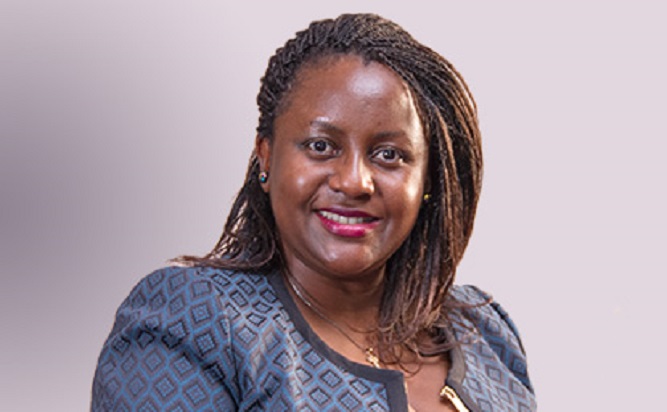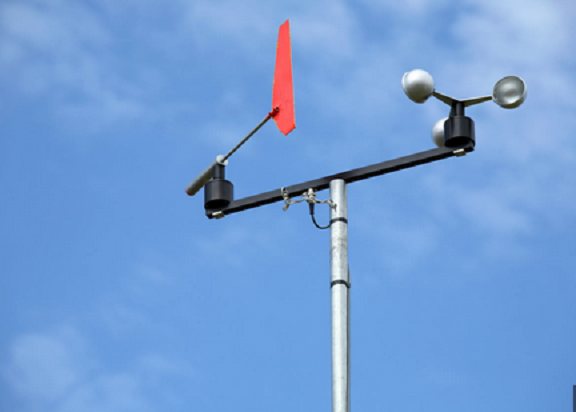The RwandAir aircraft that skidded off the runway at Entebbe International Airport
The Ministry of Works and Transport is in the final stage of constituting the team to investigate why a RwandAir aircraft skidded off the runway at Entebbe International Airport.
The incident happened at 5:31am on April 20, causing panic among passengers and disruption of flights to and from Entebbe airport. The 44 passengers and 7 crew members on board disembarked from the CRJ900 aircraft, flight number 464, without any injuries.
RwandAir is currently marketed as the safest airline in Africa and Rwanda cannot take lightly the incident that casts the slightest question mark on its safety record, however the investigation must be led by the authority in the territory where the incident occurred.
According to sources at the Works ministry, names of five people to constitute the probe team have been forwarded to General Katumba Wamala, the Minister of Works and Transport for approval. Katumba has not yet announced the team.
The sources declined to disclose these names before the general’s announcement, but they intimated that the team is likely to include Dr. Julius Abwone Ocaka.
Ocaka currently heads the Aircraft Accidents and Incident Investigations Unit at the Ministry of Works and Transport. The unit was established by the Civil Aviation Authority (Amendment) Act, 2019 to ensure independence of investigations.
UCAA used to host the investigation unit, which International Civil Aviation Organisation-ICAO said needed to be independent. Waiswa Bageya, the Permanent Secretary of Ministry of Works and Transport, says the unit currently has two officials.
The CAA Act says the Works Minister shall appoint a probe team who include the chief and deputy chief investigators.
The law states that the investigations unit has to investigate all accidents and incidents, determine the causes or contributory factors of the accidents and incidents.
As such, Gen Katumba is expected to name Ocaka and his Rwandan counterpart as part of the probe team.
Ocaka and his colleague from the unit, went to Entebbe airport after the runway incident to commence investigations. They were however joined by officials from RwandAir and UCAA.
Prior to his appointment to unit last April, Ocaka worked for 16 years as the Regional Aviation Safety Officer, West Africa at the United Nations Mission in Liberia.
At the UN, he was charged with evaluation of airports and aerodromes for compliance with UN standards, pilot examination, inspection and evaluation of aircraft ground handling, Aviation emergency response plan, assessing flight crew initial and recurrent training and qualification, airline and air charter inspections and civil aviation management.
Uganda Civil Aviation Authority-UCAA said that preliminary findings showed that the RwandAir aircraft veered off the main runway at Entebbe Airport on landing due to bad weather.
Flight disruptions left hundreds of passengers stranded at Entebbe Airport, because the runway was blocked until 2:30am on April 21.
Fred Bamwesigye, the UCAA Director General, said investigations kicked off on the same day of the incident. On April 22, Bamwesigye said prior to embarking on the process for removal of the aircraft from the runway strip, a number of preliminary mandatory activities had to be undertaken such as safe evacuation of passengers and crew, and preliminary investigation to protect the evidence among others.
He added “in line with international practice, a comprehensive investigation team has been fully constituted to establish the exact cause of the incident.” But by Friday, the team had not yet been announced by the works minister.
Bamwesigye has however urged the public to stop speculating about the incident and also refuted media reports questioning the state of the runway. “Runway 17/35 was only recently resurfaced in 2020 and given a new lease of life and any non-compliances that the runway had developed prior to 2020 were fully addressed by the works undertaken in 2020,” he says.
He addedthe fire and rescue department has capacity to put off a fire from an aircraft in less than thirty minutes since Entebbe Airport is in Category 9 firefighting according to ICAO. It has fire extinguishing trucks, four firefighting marine boats and over 200 firefighters and marine rescuers.
Eng. Ayub Sooma, the Director Airports and Aviation security at UCAA, says one of the boats was acquired in 2020 at 1.4 billion Shilings. This boat has one life raft that carries 50 passengers and also has water pumps which are manually operated and can put out fire in a distance of 9.5 metres.
Sooma says the four boats can evacuate a total of 450 passengers when an aircraft lands in Lake Victoria.
Past Incidents
Accidents and incidents can be caused by human, technical and or environmental factors.
On January 3, 2019, an Ethiopian airlines flight number ET 338, a Boeing 737 – 800 skidded off the runway while landing at Entebbe International Airport. On the same day, the then Minister of Works and Transport, Monica Ntege Azuba, said a team from the Civil Aviation Authority-CAA, Ethiopian Airlines and aerospace engineers would conduct investigations to establish what caused the incident.
Azuba said that preliminary findings indicated that the “plane slightly missed a touchline due to an air-pocket, hence skidding off the runway but the pilot was able to catch up.” The aircraft which overshot the runway at Entebbe airport was carrying 139 passengers and crew who disembarked safely.
Vianney Luggya, the UCAA spokesperson, says the comprehensive probe report indicated that the incident was due to human error .
An accident was recorded on March 9, 2009 when a Russian cargo plane crashed into Lake Victoria shortly after takeoff from Entebbe Airport. The Ilyushin 76T cargo plane, which was heading to Mogadishu International Airport, Somalia, was destroyed beyond repair and all eleven occupants including four crew members, two of them Ugandans, were killed.
Col. Chris Mudoola, a retired pilot, led the probe team. Mudoola noted that the aircraft had been stopped from operating in October 2006 because it had an old engine and that one of the crew members was carrying out the role of navigator and flight engineer. Yet, the aircraft always had to have a pilot, co-pilot, flight radio operator, flight engineer and navigator. As a result, this particular crew member had “too much work load.”
Mudoola added that the crew might not have had adequate rest, that is eight hours, before the flight.
According to Adventure Uganda Safari website, the CAA Executive Director Rama Makuza said the authority was limited to checking civilian aircrafts and thereby did not have permission to check military planes like the Russian cargo aircraft.
-URN





